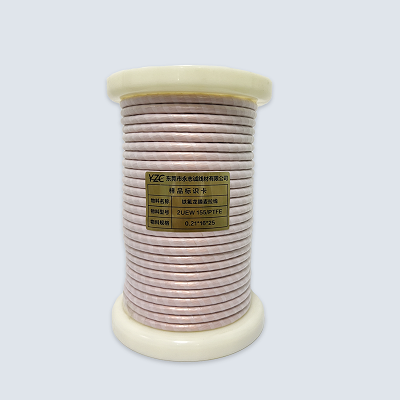Definition and Structure
Mylar Wire: also known as enameled wire. It is a conductive metal wire with an insulating layer, usually copper or aluminum. Its insulating layer is formed through the process of applying enamel, which is usually thin. This insulating varnish can be polyester, polyimide, and other materials. For example, it is common to find polyester enameled wire with an insulating layer that provides good electrical insulation and can withstand higher temperatures to some extent.
Litz Wire: Litz wire is a conductive wire made by twisting or braiding multiple strands of fine wires that are insulated from each other. These fine wires are usually enameled and each strand has its own insulating layer. The purpose of Leeds wire is to minimize the effects of the skin effect (a phenomenon in which high-frequency currents flow mainly on the surface of a conductor). For example, in high-frequency applications, the effective conductive area of an ordinary single-stranded conductor is reduced due to the skin effect, whereas Leeds wires can increase the effective conductive area by means of a multi-stranded fine conductor structure.
Performance Characteristics
Mylar wire:
Electrical performance: with good conductivity, its insulation performance can meet the general motor, transformer and other equipment in the low-frequency environment. For example, in ordinary small motors, Mylar wire can effectively transfer electrical energy to the windings, and the insulation layer can prevent short circuits between the windings.
Mechanical properties: Mylar wire has good strength and toughness and can withstand a certain degree of stretching and bending. It is not easy to break during the winding process of the motor winding. At the same time, the enamel layer on its surface can prevent the wire from being oxidized and corroded to a certain extent.
Temperature performance: Different enameled materials of Mylar wire have different temperature resistance. Polyester enameled wires can generally work normally at around 130 - 150°C, while polyimide enameled wires can tolerate higher temperatures up to around 200 - 220°C.
Leeds Wire:
ELECTRICAL PERFORMANCE: Leeds wire offers performance advantages at high frequencies. Due to its special multi-stranded twisted or braided structure, it reduces AC resistance and energy loss. In high-frequency transformers, high-frequency motors and other equipment, Leeds wire can effectively transmit high-frequency electrical energy and improve the efficiency of the equipment.
Mechanical properties: Leeds wire is more flexible because it is composed of multiple strands of fine wires. This makes it more advantageous in some application scenarios that require bending or twisting. However, its overall strength may not be as strong as that of a single strand of Mylar wire, and the strands may come apart when subjected to higher tensile forces.

TEMPERATURE PERFORMANCE: The temperature performance of Leeds wire depends on the insulation of the fine conductors that make it up. If the fine conductor is made of high quality enameled wire, its temperature resistance can be comparable to that of Mylar wire. However, in practice, due to the structural characteristics of Leeds wire, it may be necessary to take into account the effect of differences in thermal expansion between the strands on performance in high temperature environments.
Areas of application
Mylar wire: It is widely used in the winding of traditional electrical equipment such as motors, transformers and inductors. For example, Mylar wire is the main winding material in common household motors, such as washing machine motors and fan motors, as well as in small power transformers. It can meet the working requirements of these devices at low frequency and relatively low power.
Leeds wire: mainly used in high frequency field. In high-frequency transformers, such as those found in switching power supplies, Leeds wire improves the efficiency and power density of the transformer. In the transmitting and receiving coils of wireless charging devices, Leeds wires can also better transmit high-frequency energy and reduce energy loss. In addition, there are applications in some high-frequency motors, such as drive motors for electric vehicles (some high-performance motors use Leeds wires).